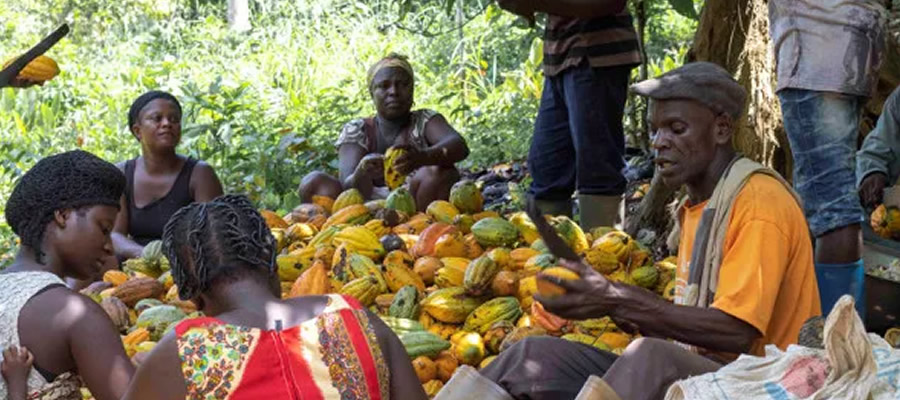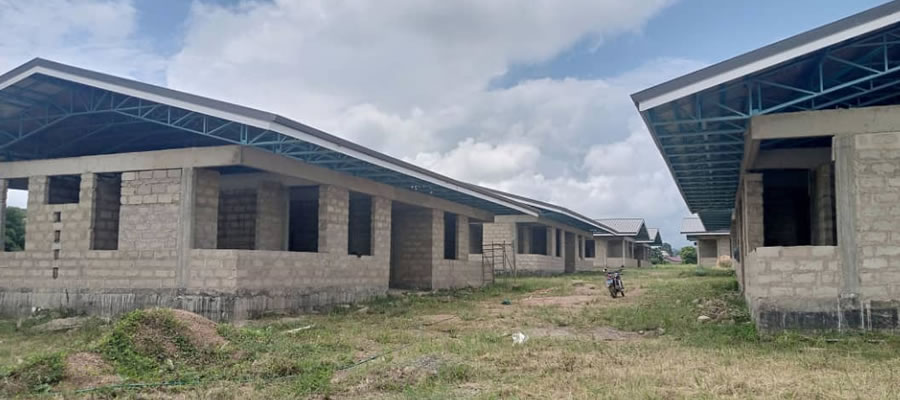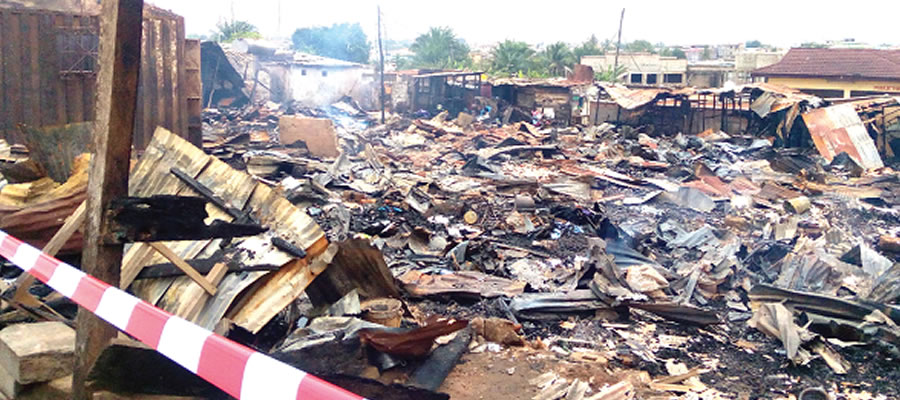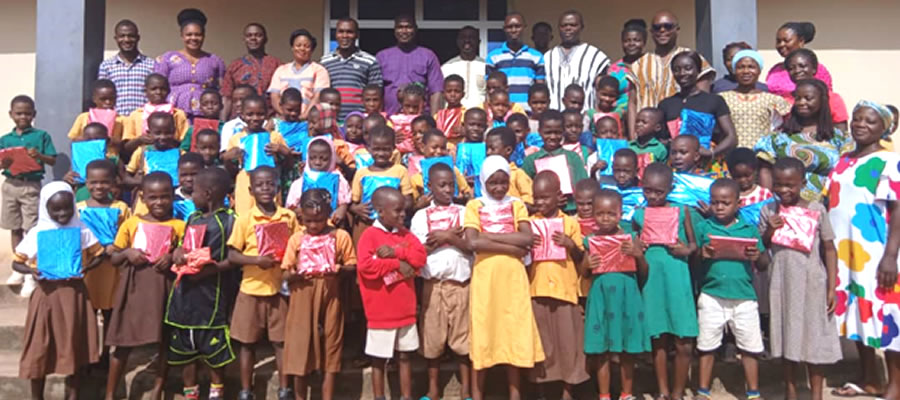

COMMUNITY NEEDS AND ASPIRATIONS
The Assembly in its quest to ensure that development planning is done in a participatory manner with the people of the District undertook a series of public hearings at the six Area Town/Area council levels of Kadjebi, Asato, Dodi, Dodo, Ahamansu and Amanta. The essence of the public hearings was to solicit for the views, needs and aspirations of the people and use them as the basis for the plan preparation and also to ensure community ownership of the plan.
HARMONISATION OF COMMUNITY NEEDS AND ASPIRATIONS WITH IDENTIFIED KEY DEVELOPMENT GAPS/PROBLEMS/ISSUES
The community needs and aspirations identified above have been harmonized with the summarized key development issues from the performance review and profile of the District. Each community needs and aspirations were matched against the summarized key development issues and scored to determine the level of harmony between them. The scoring was done based on the following:
Harmonization of the community needs and aspirations as against the summarized key development issue from the performance review and profile of the Municipality is presented in the table below:
The average score of 1.9 is very high, and therefore an indication that there is strong harmony of community needs and aspirations and key development issue and which has implication for 2018 – 2021 MTDP.
VULNERABILITY ANALYSIS
Under the current decentralization programme and the national poverty reduction strategy District Assemblies are to institute programmes and implement projects that will empower vulnerable groups within their jurisdiction. These groups of people include children, women, the aged and the physically challenged persons. They are also to provide facilities to enhance good community life. Kadjebi District has a Social Welfare Department, which oversee, and co-ordinates all activities that promote good community life.
VULNERABILITY GROUPS
The vulnerable groups identified within Kadjebi District are;
C h I l d r e n
Children constitute a large percentage of the population in the District. However, they bear harsh socio-economic conditions within the District as child labourers. High unemployment and low household incomes have forced many children to work as house helps, farm hands or petty traders to fend for themselves or support their families. Child labour and the breakdown of the extended family system is fuelling child delinquency. An average of 10 children comes into conflict with the law every year in the district.
The effect of child delinquency and labour is high dropout rate especially among girls.
Awareness on child rights and protection is however high in the Kadjebi District. So far the Department of Social Welfare in collaboration of Atta Foundation has registered about 300 orphans and needy/vulnerable children for support. At the end of 2009 Atta Foundation in collaboration with the Netherlands assisted only 90 registered orphans with school uniforms, food items and other materials.
The Youth
The youth who constitutes about 48.2% of the total projected population of 61,520 in the district are facing the harsh realities of life without jobs, a sense of direction and hope. In their frustration and anguish they have turned to alcoholism, gambling, smoking and drug abuse. These have encouraged indiscipline, vandalism and stealing among the youth.
Harsh economic realities have made it increasingly difficult for husbands to maintain their families. Thus child molestation, wife battering and other forms of domestic violence is gradually assuming alarming dimensions in the District. Divorce is also on the increase.
The scare of HIV-AIDS also confronts the youth because they engage in illicit sex and drug abuse. Another area where much has not been done for the youth is in terms of providing recreational facilities. In order to promote the recognition for the youth, the National Youth Council has registered five (5) Youth groups with a total membership of 320 in the district. 48% of the membership is females.
Youth Employment Agency (YEA)
The Kadjebi District Office of the Ghana Youth Employment Agency formerly known as Youth Employment Program (YEP) between 2015 and 2016 has so far provided jobs for 626 youths under these modules.
The Aged
Old people lack recognition and mostly live under deplorable conditions. They live mainly on remittances, farms and the goodwill of friends and relatives. They have no place to socialize and cannot contribute towards the development of the District. They need assistance in terms of food, clothing and shelter.
The Physically Challenged
There are about 279 registered persons with disabilities within the District. They are made up of 170 men, 58 women and 51 children and most of them are not in any gainful employment. These people desire to be fully integrated into main stream development programmes so that they are economically active and socially empowered. They also seek increase participation in the decision making process.
SOCIAL INTERVENTION PROGRAMMES LEAP
The Livelihood Empowerment Against Poverty (LEAP) programme is run by the Development of Social Welfare under the Ministry of Gender, Children and Social Protection. Leap is a conditional and unconditional cash transfer for the poorest households in Ghana.
The Government provides this programme to assist the poorest families with basic needs including food and also to improve health and education status of children in the poorest families. They are three (3) categories of persons who qualify to receive LEAP namely;
Orphans and vulnerable children
The Aged/Elderly (65 years and above)
Severely disabled people who cannot work
In Kadjebi District twenty-three (23) communities and two hundred and Sixty (260) households are currently benefiting from LEAP programme.
DISABILITY ANALYSIS
Population with Disability
Data on persons with disability and sex. Out of the total population of 59,303 persons, about 1,335 responded as having one form of disability or the other and they constitute 2.3 percent of the population, which is below the regional average of 4.3 percent.The proportions of male and female PWDs are 2.4 percent and 2.1 percent respectively.PWDs are slightly higher among males than females in both rural and urban areas.
Type of Disability
The 2010 Population and Hosing Census collected data on seven types of disabilities, these include: sight, hearing, physical, speech, intellectual and emotional disabilities. Table 6.1shows that physical and sight disabilities are the two major types of disability, accounting for 35.1 percent and 32.7 percent of all disabilities respectively. However, intellectual disability accounts for 19.2 percent followed by emotional disability (18.7%). Hearing disability is the least among the types of disability representing 13.7 percent. Among all the disability types,there are more females with emotional, physical, intellectual and hearing disabilities compared to males in the District.
Gender Issues
Women constitute about 48.6% of the population of the District; they often bear the brunt of broken homes as single parents and work hard to feed their families. Violence against women and girls persists on a large scale despite efforts by many actors and organization to curtail the problem. Statistics from the Democracy Violence and Victims Support Unit (DoVVSU), (the specialized unit of the Ghana Police Service mandated ‘to address the rising number of cases of abuse and violence’), confirms the magnitude of the problem. Women, especially in the rural areas, remain subject to traditional male dominance and as a result are often denied their statutory entitlement to inheritance and property.
Other major gender concerns include a lack of gender-responsive development planning and inadequate sensitization on gender issues at the district levels; the lack of a gender and development approach based on an understanding of gender roles and social relations of women; inadequate research on gender related concern; inadequate advocacy for gender equality at all levels; all compounded by the lack of a mechanism to monitor and evaluate gender issues.
The majority of women in Kadjebi District earn less than $1 a day. 60% of the women are without jobs, the remaining 40% are engaged in farming, trading etc. Awareness on the rights of women is very low in the district, and less than 10% of them get involved in the decision-making process of their communities.
In spite of the existence of national laws, women continue to suffer discrimination. Access to resources such as land, labour, capital and technology discriminate in favour of men (ABANTU 2004).
SOCIAL RESOURCE
The social resources available in the district include; farmer groups, processing groups and people with Disabilities. Such resources serve as potentials in fostering unity among individuals to promote local and social development. These therefore need to be offered the needed support for development. The assembly however have not exploited this resource in the attempt for socio-economic development, moving forward, these associations could be encouraged to pick up task that will not only foster unity in the district but will boost revenue generation. This will be a lot easier because of the economic orientation of the majority of these groups.
Date Created : 11/21/2017 5:43:07 AM










 facebook
facebook
 twitter
twitter
 Youtube
Youtube
 +233 593 831 280
+233 593 831 280 0800 430 430
0800 430 430 GPS: GE-231-4383
GPS: GE-231-4383 info@ghanadistricts.com
info@ghanadistricts.com Box GP1044, Accra, Ghana
Box GP1044, Accra, Ghana